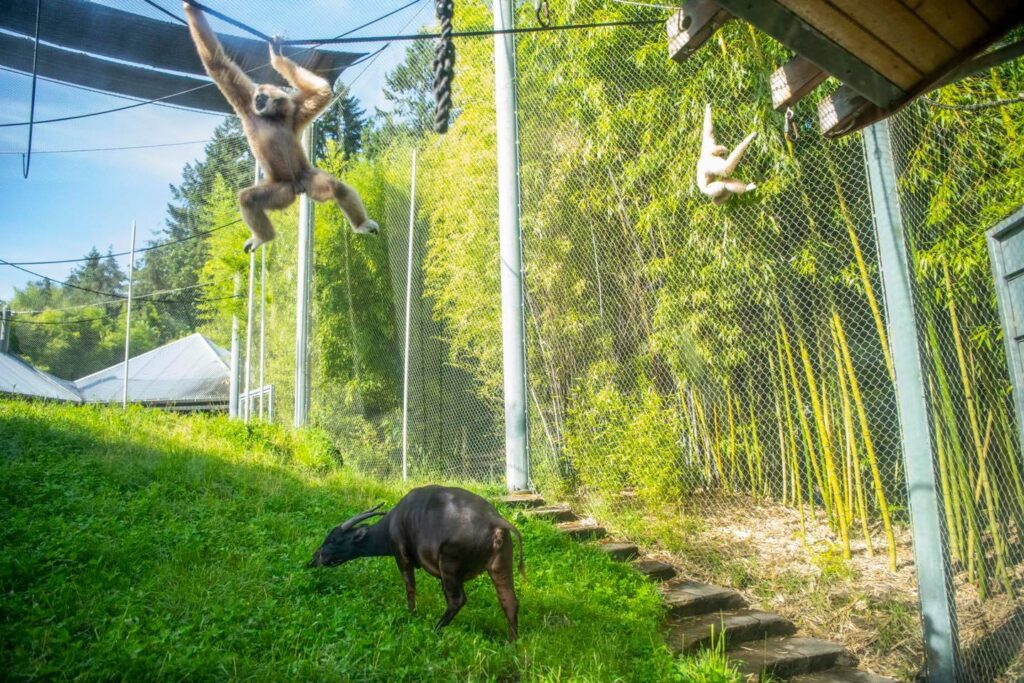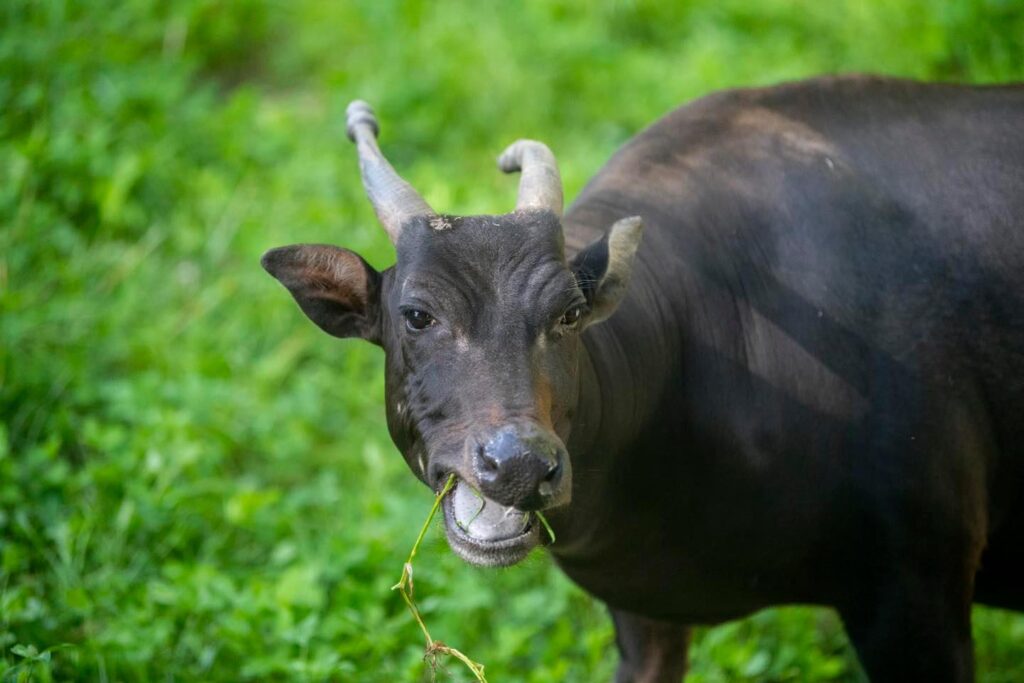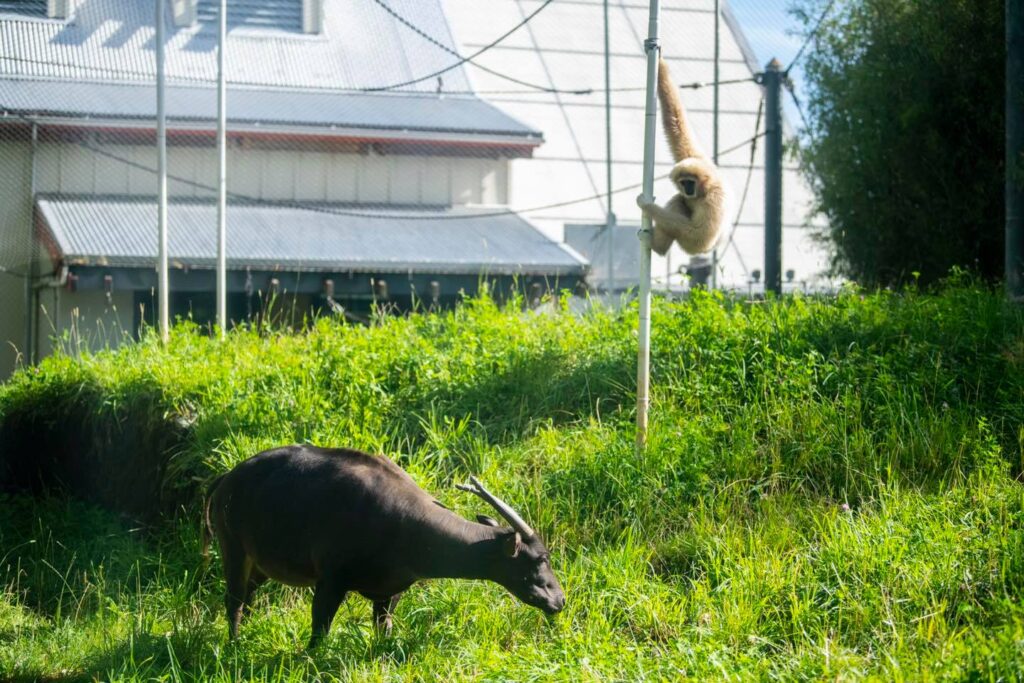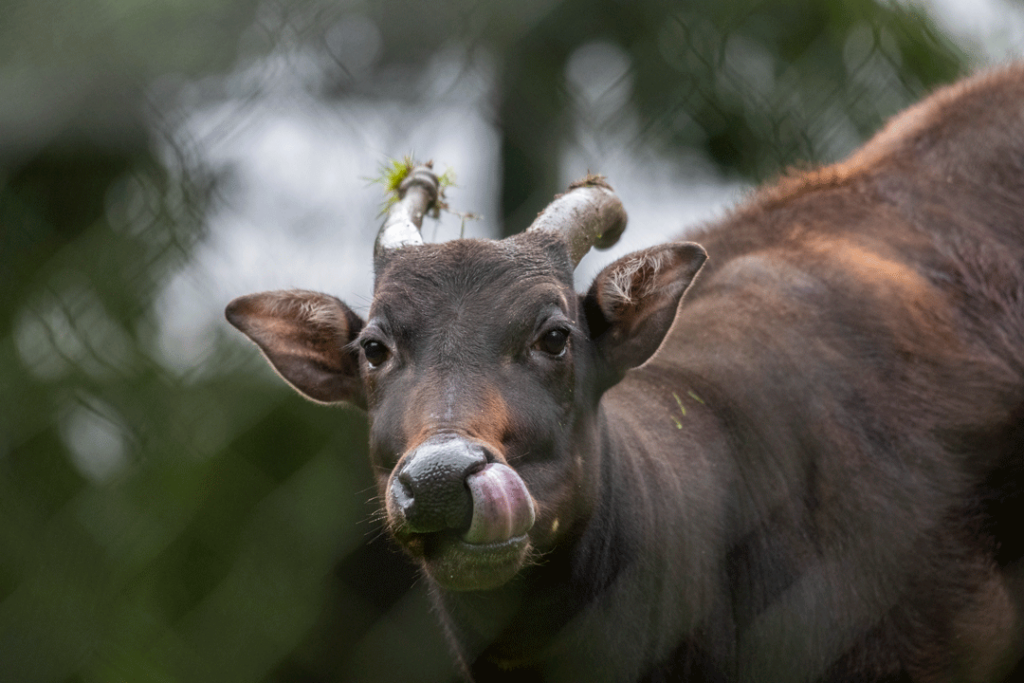If the tiger is the king of the jungle, then the anoa would be the gardener. They’re not iconic like an elephant or acrobatic like a siamang. They don’t star in Pixar movies or cartoons. Even in the jungle, they can be impossible to find. But this tiniest species of buffalo, just 30 inches tall, has its own adorable qualities – and is vital for the healthy tropical forests other animals (and humans) depend on.
This year, on Action Indonesia Day (Aug. 13), we’re shining a gentle light on the lowland anoa: in danger of extinction, and needing all the attention it can get.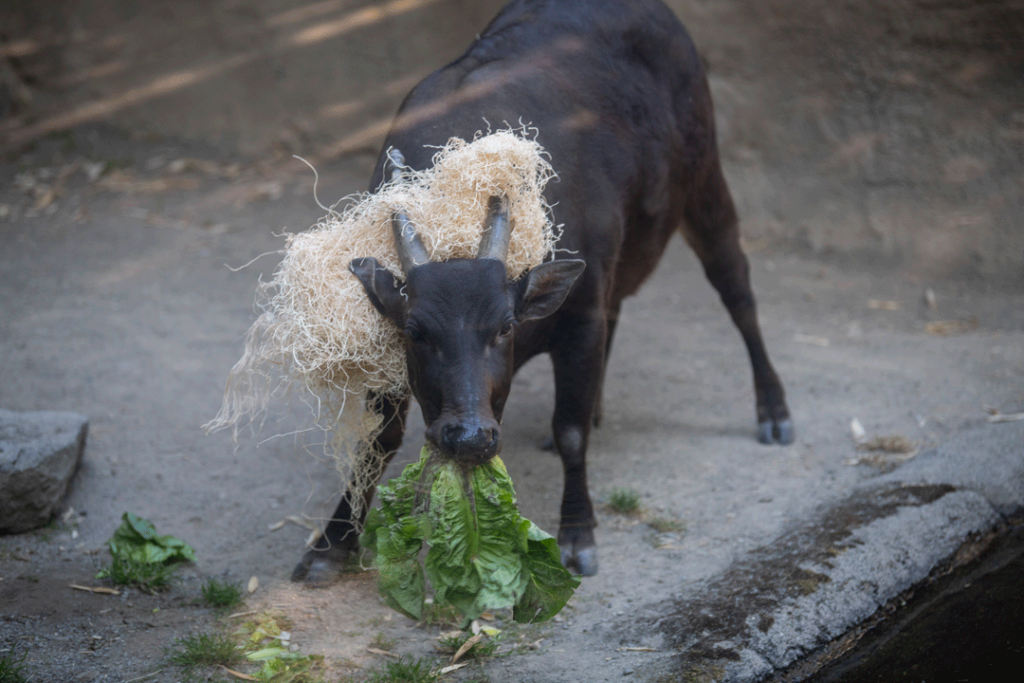
Sleek and sassy
“She’s getting gentler as she gets older, but she’s still sassy – she knows exactly what she wants,” says Telena Welsh, curator of Asian animals at Point Defiance Zoo & Aquarium.
Nearby, Baby Bean, the zoo’s only anoa, looks up from grazing with enormous, melty black eyes, her sleek black coat shining in the sun. 21 years old, she’s lived at the zoo since the Asian Forest Sanctuary opened in 2004, rotating with the other animals around the habitats.
She occasionally shares space with them (she enjoys hanging out with the siamangs and gibbons). Like all anoas, she’s a good swimmer, and likes wallowing in mud or shallow pools.
Tacoma zoo guests may not realize just how unusual this is. There are 150 anoas in U.S. zoos, but only 25 are viewable by the public.
And in the wild? Well, that’s a whole other story.
Naturally shy
Welsh should know. In 2016 the keeper, who also leads the anoa Species Survival Plan® for the Association of Zoos & Aquariums, traveled to Indonesia to learn more about anoa conservation. The trip included a sweaty, muddy trek in the Sulawesi jungle, where Welsh saw babirusa (a kind of wild pig with tusks, also endangered) but no anoas.
“They’re very shy, solitary animals that keep away from humans,” Welsh explains. Baby Bean, of course, is different, having grown up in human care. She gets along well with keepers, and enjoys a good hip or shoulder scratch – plus occasional treats like grapes or banana.
Anoas are vegetarians: they eat grasses, leaves, ferns and fruit, roaming around the jungle and spreading seeds as they fertilize the forest with their poop. Nature’s gardeners, they’re vital to the health of tropical rainforests, on which so many animals depend for survival.
Shrinking forests, dwindling anoa
But those forests are shrinking. As human agriculture expands, forests are cut down, leaving less and less habitat for anoas. Their other big threat is humans themselves. Once revered (cave paintings of anoas have been found dating back 35,000 years – some of the oldest figurative art in the world, and highly respectful in nature), these tiny water buffalo became feared by locals for their sharp, dagger-like horns, which are their main defense against predators.
“Anoas can definitely be fierce when they defend themselves,” says Welsh. “They can even chase people up trees. So they became a little like the big bad wolf in all the stories.”
More and more, people began hunting anoas for meat, or to sell back to the government to be ‘protected’. Now, fewer than 2,500 anoas survive in the wild.
From ‘villain’ to hero
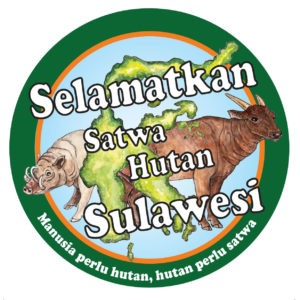
Enter the Alliance for Tompotika Conservation, a non-profit organization that works to save Indonesian animals like anoa and babirusa.
“We want to educate people in Sulawesi to pay attention to their marvelous rare wildlife, especially those unique species that only occur in their homeland,” says Marcy Summers, director of the Vashon Island-based organization.
To turn around the anoa’s image from scary to vulnerable, Point Defiance Zoo has supported the Alliance in an anoa public relations campaign: stickers and billboards that portray these shy creatures as something to be protected, not feared. Working with other organizations, the Alliance in past years handed out over 5,000 stickers depicting an anoa and babirusa over a green map of Sulawesi, with the texts “Save wildlife and forests of Sulawesi’ and “People need forests, forests need wildlife” in the local language. (The sticker was actually designed by Vashon artist Sandra Noel.)
Billboards, supported by the Zoo Society’s Dr. Holly Reed Wildlife Conservation Fund, complemented the education campaign.
“Every time a schoolkid looks at the cover of her notebook, or a villager looks at his motorcycle helmet, they are reminded: human activities have brought these irreplaceable creatures to the brink of extinction,” says Summers, “and we need to stop hunting them and destroying their forests before it’s too late.”
We can help
Indonesia, with its exotic rainforests and fantastical animals, may seem a long way from the Pacific Northwest. But there’s plenty we can do for anoas right here. Donations to the Dr. Holly Reed Fund help protect animals like the anoa that are in danger of extinction. Spreading the word about these gorgeous creatures, and how they’re just as important as tigers, elephants and primates, also helps.
And on Action Indonesia Day, zoo guests can meet Baby Bean – and see just why this gardener of the jungle deserves as much of the spotlight as the kings and acrobats.
